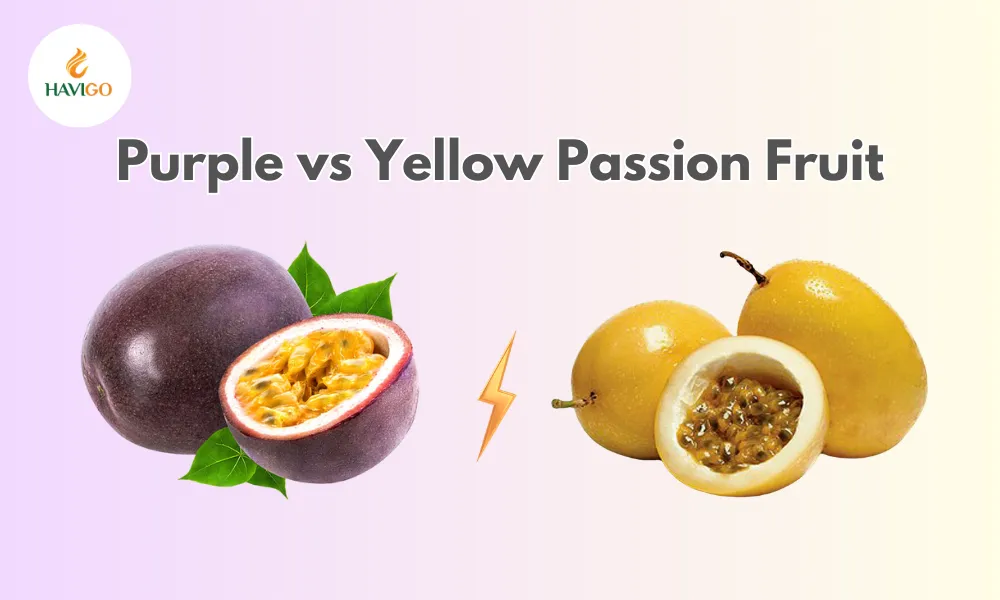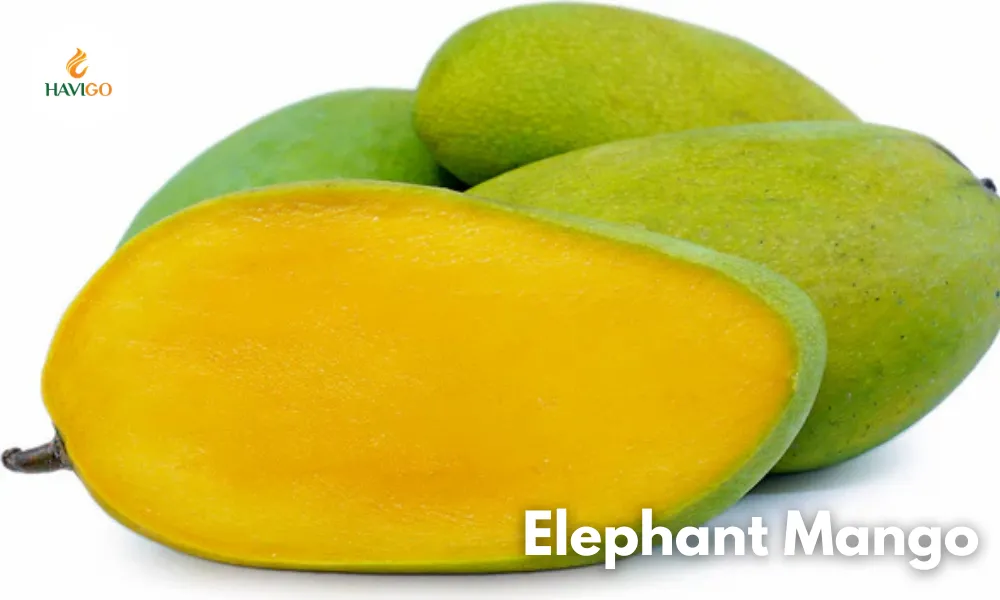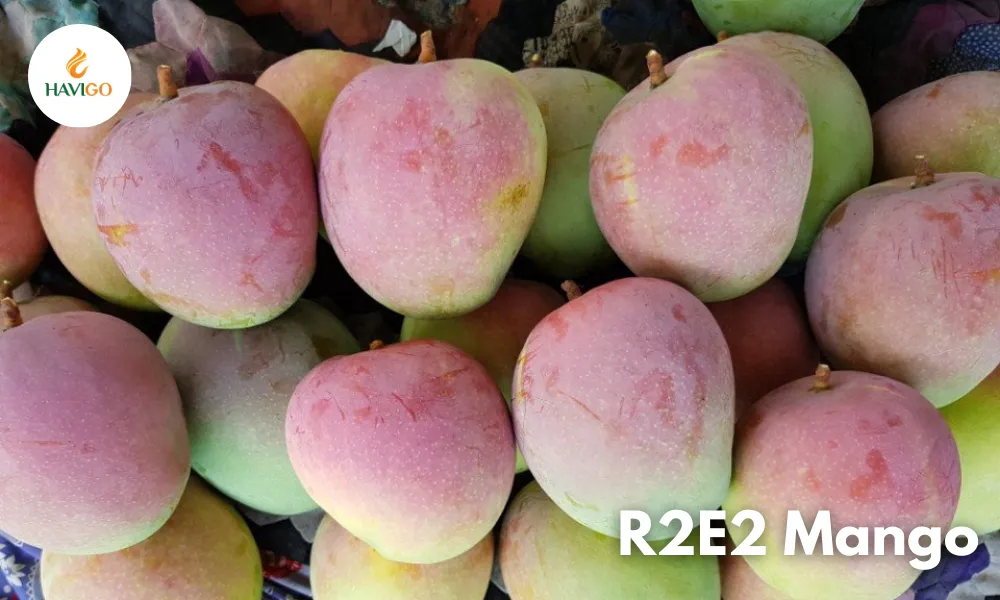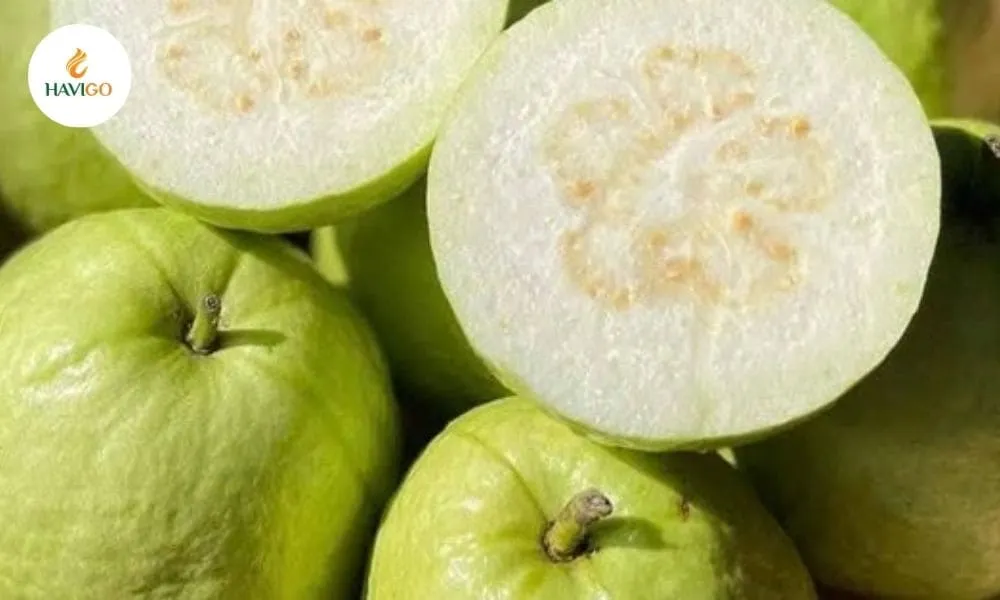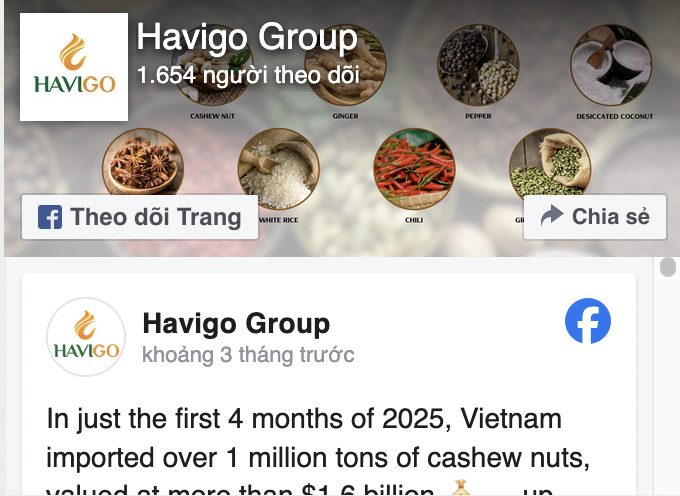Vietnam is one of the leading exporters of desiccated coconut in the world, particularly from the Ben Tre province, which is known as the “Kingdom of Coconut”. Vietnamese desiccated coconut is known for its high quality and high fat content, ranging from 63% to 68%. It is a versatile ingredient that can be used in a variety of recipes, and it is also a good source of nutrients. And there are many interesting facts about desiccated coconut. Let’s discover more about this product!
1. What is Vietnamese Desiccated Coconut?
In Vietnam, Ben Tre province is the capital of coconut. This province can supply high productivity of fresh coconut and coconut products. Therefore, desiccated coconut is also one of the high-quality products from this province. Ben Tre desiccated coconut is available in different varieties, including fine, medium, and chip, and people use them in a variety of baking and cooking.
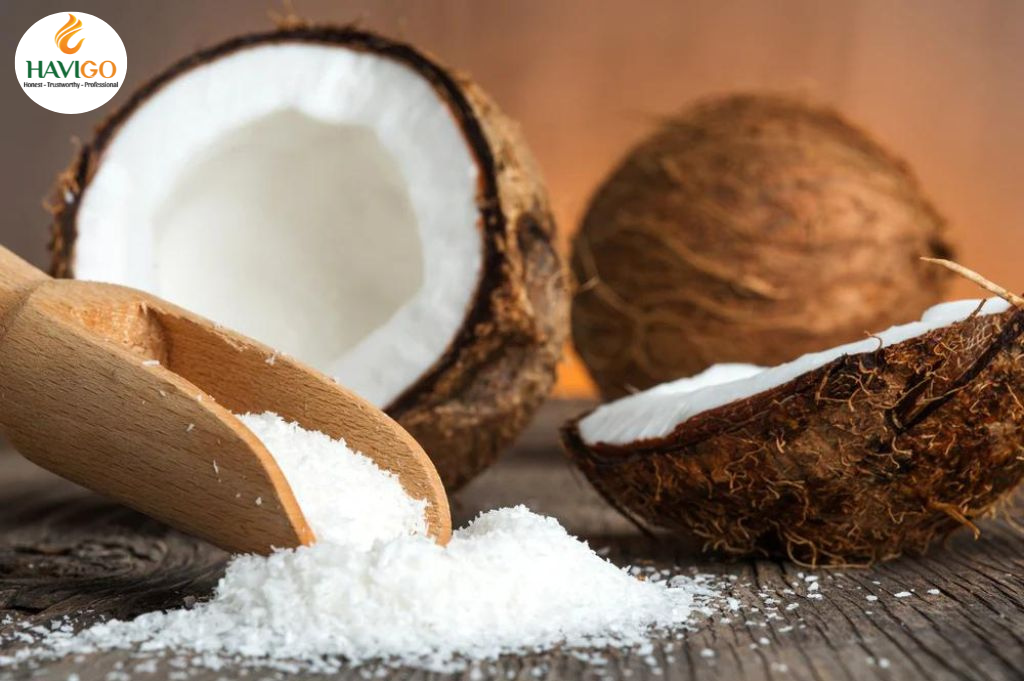
In recent years, the demand for desiccated coconut has increased due to its various uses. The coconuts are carefully harvested and processed, resulting in a product that stands out in the global market. People use the coconut meat to produce desiccated coconut. They grate the flesh of mature coconuts and then dry it out in hot air. The result is a dry, finely grated coconut and it meets the standard.
So, Vietnamese desiccated coconut is a delightful ingredient that adds flavor, texture, and versatility to both sweet and savory dishes. This product contributes to the Vietnam export industry significantly!
2. Processing Desiccated Coconut
It all starts with the harvesting of mature coconuts. Once harvested, producers husk and shell the coconuts to reveal the white meat. Then, they shred this meat of coconut into various sizes, such as fine, medium, chips and flake.
To produce high-quality desiccated coconut, the drying process is crucial. This step helps to remove moisture content and preserve the desiccated coconut. There are various drying methods, in which the below are the most popular:
Oven drying: Producers place shredded coconut in ovens at a temperature of around 50-60°C for several hours. This method offers precise control over the drying process.
Air drying: A more traditional method, they spread the shredded coconut on trays and allow it to dry naturally. This process is slower but often results in a product with a more natural flavor.
Mechanical drying: They use specialized drying machines to efficiently remove moisture. This method is faster and more consistent than traditional methods.
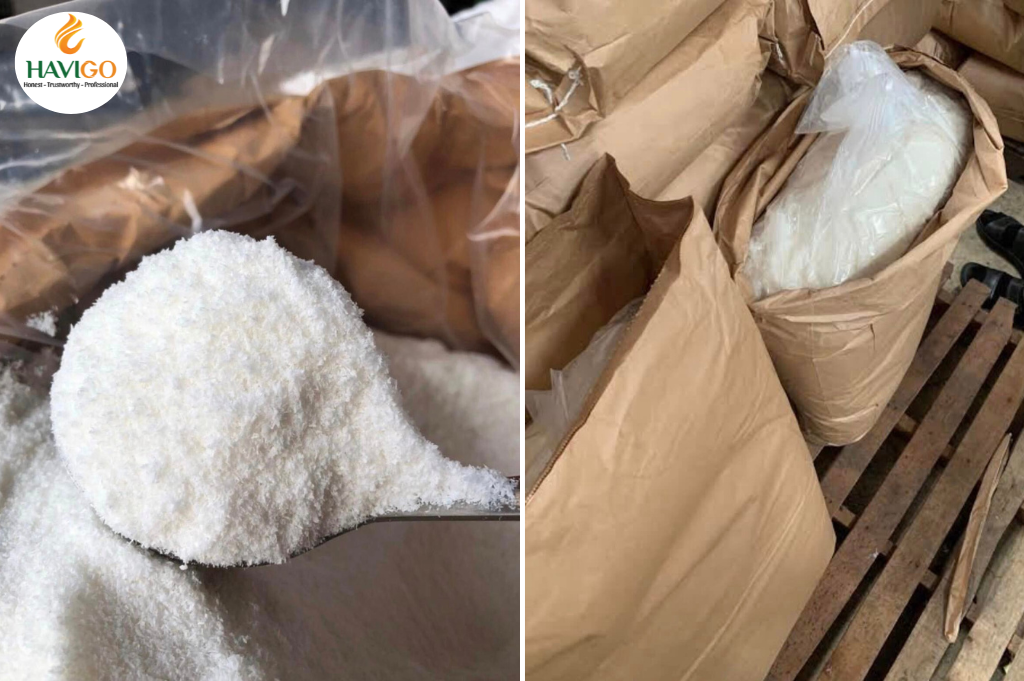
After the drying process, desiccated coconut reaches its ideal moisture. However, the moisture of desiccated coconut is based on its fat content. Low-fat desiccated coconut is at 3% moisture, while high-fat one is at 5%.
Once coconut is dried, it undergoes a grading process to ensure quality and consistency. Then, producers carefully pack desiccated coconut in airtight containers to maintain its flavor and prevent spoilage. By following these steps, manufacturers can produce high-quality desiccated coconut that is both delicious and long-lasting.
3. Differences of two sizes: Fine vs. Medium
Now, onto the main part! Here are the key differences between fine and medium size desiccated coconut:
Size: This is the most significant difference. Fine coconut boasts a smaller particle size, resembling coarse flour or breadcrumbs. While, medium coconut, on the other hand, features larger, more distinct flakes.
Texture: Fine coconut provides a smoother, almost melt-in-your-mouth texture, while medium coconut offers a delightful chew with a more noticeable presence in your dish.

Applications: Due to their textural variations, these coconut cousins excel in different culinary applications.
Fine-grade desiccated coconut has a delicate, powdery texture. so, people often use fine desiccated coconut in applications that need a subtle coconut flavor and light texture. It’s a popular ingredient in:
- Baking: Its subtle sweetness and moisture can enhance the flavor of cakes, cookies, macarons, and other baked goods.
- Desserts: a sprinkle of fine desiccated coconut can enhance ice cream, puddings, and parfaits. It adds texture and flavor that makes food more appealing.
- Savory dishes: Curries, stir-fries, and soups can be given a touch of tropical flair with the addition of fine coconut.
- Beverages: Coconut milk and coconut water, both popular beverages with fine desiccated coconut.
Medium-grade desiccated coconut has a coarser texture and a more pronounced coconut flavor compared to the fine variety. People often use medium desiccated coconut in:
- Baking: Coconut bars, cakes, and bread often incorporate medium coconut for its distinct flavor and chewy texture.
- Savory dishes: The nutty flavor and hearty texture of medium coconut enhance coconut rice, coconut curry, and other savory.
- Garnishes and toppings: A sprinkle of medium desiccated coconut gives Salads, soups, and desserts a tropical touch.
- Beverages: Besides fine grade, people also use medium-grade ones to make coconut milk and water.
4. Fat content of Desiccated Coconut
Desiccated coconut comes in three main types based on its fat content: low-fat, medium-fat, and high-fat.
- Low-fat desiccated coconut: Low-fat desiccated coconut typically contains around 25 – 35% fat. So, it boasts a drier texture and a subtler coconut flavor compared to the higher-fat ones. This makes it a suitable option for health-conscious consumers who want to enjoy a hint of coconut without the higher richness. Low-fat desiccated coconut can also be a good choice for adding a touch of texture to dishes without overpowering the overall flavor.
- Medium-fat desiccated coconut: While not as common as low-fat and high-fat varieties, medium-fat desiccated coconut is still a good choice. This kind offers a fat content ranging from 40 – 50%. In terms of flavor, it bridges the gap between low-fat and high-fat desiccated coconut. Therefore, it offers a slightly richer texture and flavor than the low-fat option but is not quite as intense as the high-fat one.
- High-fat desiccated coconut: Desiccated coconut with a fat content of above 63% is the high-fat type. This type offers the most intense coconut flavor and the creamiest texture due to the higher coconut oil. As a result, it also has the highest calorie content among the three varieties. High-fat desiccated coconut is ideal for dishes that need a strong coconut flavor, such as coconut macaroons, piña coladas, or topping for curries.
Here’s a table summarizing the key characteristics of each fat content category:
| Fat Content | Texture | Flavor Profile | Applications |
| Low-fat | Drier | Subtler coconut | Healthier option, adding a touch of coconut without overpowering flavor |
| Medium-fat | Moderately dry | Moderately rich coconut | Offers a middle ground between low and high-fat options |
| High-fat | Creamiest | Most intense coconut | Ideal for recipes requiring strong coconut flavor and moist texture |
Consider the size and texture
Beyond fat content, the size of desiccated coconut is the factor to consider when choosing. Shred size can impact texture and how the coconut is incorporated into the dish. Finer shreds blend more seamlessly into batters, while larger flakes add a more distinct textural appearance.
5. Market demand for Vietnamese Desiccated Coconut
Vietnamese desiccated coconut is perfectly positioned to meet the growing global demand for specific product characteristics. As consumers become more health-conscious, there’s a rising demand for organic and fair-trade certified ingredients. Vietnamese producers are increasingly catering to this demand by implementing sustainable farming practices and fair trade principles in their operations. Additionally, the global focus on environmental responsibility aligns well with Vietnam’s potential for sustainable coconut production.
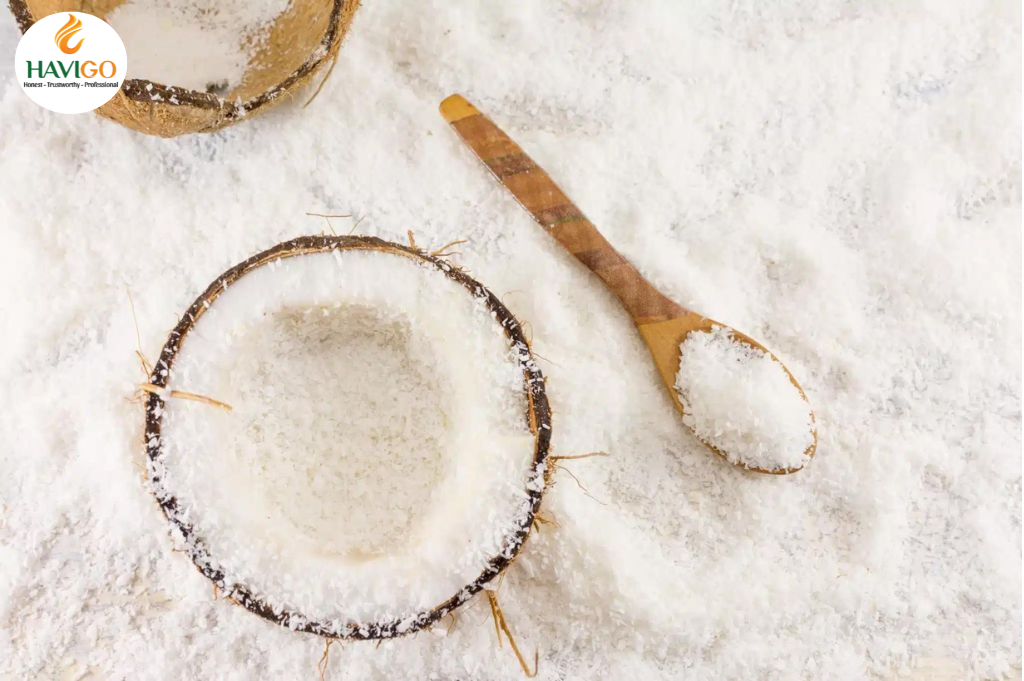
Since desiccated coconut is not produced in Europe, these countries import this product in large amounts. Europe imports desiccated coconut diversely and the three largest importers (Netherlands, Belgium, and Germany) account for less than 50% of total European imports. Besides, the US and Bangladesh are the markets with high demand for desiccated coconut. People use this product to make confectionery or food ingredients.
About us
Havigo Company Limited operates in the field of agricultural export. We wish to bring high-quality Vietnamese agricultural products such as spices, rice, beans, and fruits… to the world. We supply you with high-quality products at the best price. If you find interested in importing Premium Desiccated Coconut, don’t hesitate to get in touch with us for better support via WhatsApp: +84 979 58 58 56.

We are confident in our ability to deliver products that consistently meet the highest quality standards while offering competitive pricing within the market. Furthermore, we are committed to providing exceptional customer support throughout your entire experience. Please contact us for better support via WhatsApp: +84 979 58 58 56.






